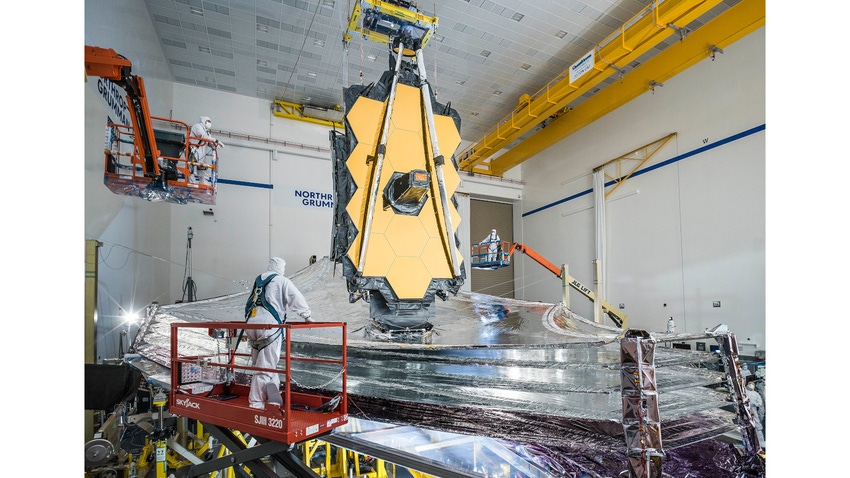NASA’s James Webb Telescope: Exacting Design and Constant Testing
A key person behind the development of the powerful James Webb Space Telescope discusses the challenges of designing and building this outer space engineering marvel.

At a Glance
- Jonathan Arenberg of Northrop Grumman will discuss the development of the James Webb Space Telescope during DesignCon.
- The telescope was the culmination of several decades of intensive development.
When the James Webb Space Telescope (JWST) launched Christmas Day in 2021, it was the culmination of over two decades of planning and construction and countless manhours to ensure everything went to plan. That was no easy task, according to Jonathan Arenberg, Chief Mission Architect, Science & Robotic Missions, Civil & Commercial Space at Northrop Grumman who oversaw the integrated design performance for this massive telescope that is now starting to unleash a new chapter in astronomical observations.
Arenberg, who is delivering a keynote presentation at DesignCon Thursday, February 1 titled, “NASA's James Webb Space Telescope: Its Mission, Design & Performance,” spoke to Design News on the development of the telescope, which among many feats has an Optical Telescope Element (OTE) that contains the largest mirror ever launched into space and employs many other new technologies.
For Arenberg, an engineer by training but also an enthusiastic fan of intergalactic observation, the JWST’s ability to observe cosmic history through its unmatched capability to capture images and spectra is helping to rewrite existing theories of when and how the universe was formed, ranging from distant stars to our own planetary system. A key attribute is the telescope’s ability to work in the infrared light region.
Painstaking Review
Creating and implementing the technologies that go into the telescope proved to be a long, arduous process. “We had to prove the enabling technologies would work,” said Arenberg, noting that there had to be a high confidence in the design of the telescope before anything was constructed.
Arenberg recalled a long and exhausting review process during the mid-2000’s decade, including an intensive week-long series of review sessions where NASA would bring in experts to carefully scrutinize the design of each sub-system comprising the telescope. “I moved to Huntsville, Alabama for a few months to run tests and collect data to prove that we could manufacture the backplane for the telescope,” Arenberg recalled.
Arenberg added that every component of the telescope structure had to be optimized to maintain the stable alignment of the telescope for days. “We had to prove that the structure would remain stable and predict how it would behave under various forces, including development of measurement techniques.”
At the time the telescope was being planned and built, simulation and modeling tools existed but were nowhere as capable as the tools available to engineers today. “We took full advantage of existing tools and stretched their limits,” Arenberg said. “Since we had to understand the physics, we were performing testing as we were driving the design forward and needed to add details to the model.”
Reconciling Different Models
Complicating the process was the fact that there were differences in some of the design models that existed, such as the thermal model. “The contractor team had its model, and the government team had its model, so we had to create a partnering process to move design forward.”
The constant testing and tweaking was a painstaking but necessary step throughout the design and building of the telescope, Arenberg noted. “It was sort of like tuning a violin. We had to convince ourselves that we dotted all of our i’s and crossed all out t’s. That’s why we kept testing.”
Worth the Effort
For Arenberg, the protracted, exhaustive telescope development and deployment process was well worth the effort. So far, the James Webb Telescope has received positive reviews for is performance, and Arenberg is more than happy. “It is a delight watching customers and the astronomy community share the delight in our collective success.”
Not one to rest on his laurels, Arenberg is getting involved in another project, called the Habitable Worlds Observatory (HWO). This optical telescope would be as large as the James Webb Space Telescope. The HWO will have the mission of trying to find signs of life in other galaxies. The telescope could be operational by the early 2040’s.
About the Author(s)
You May Also Like





